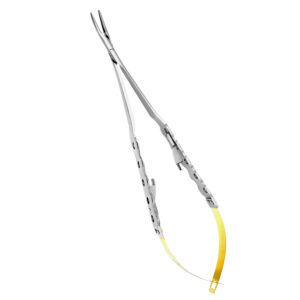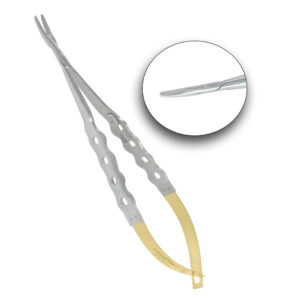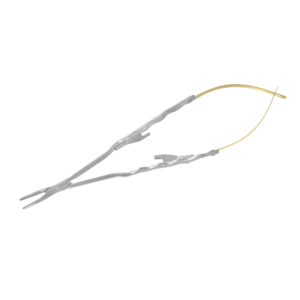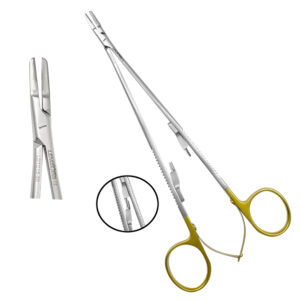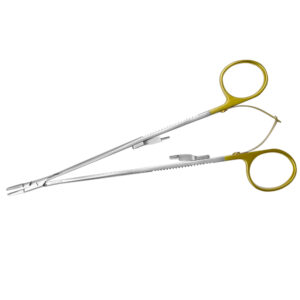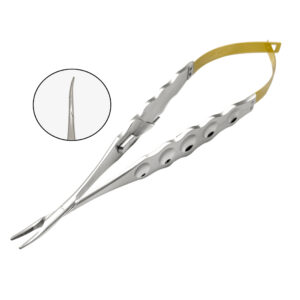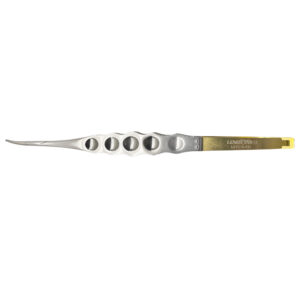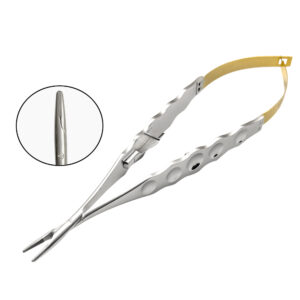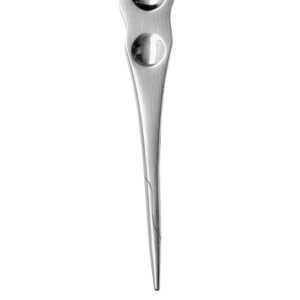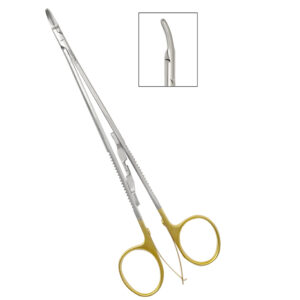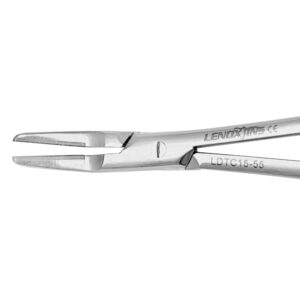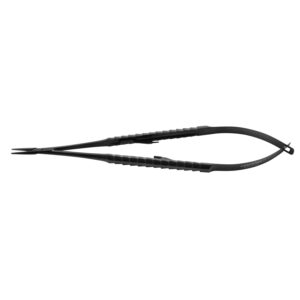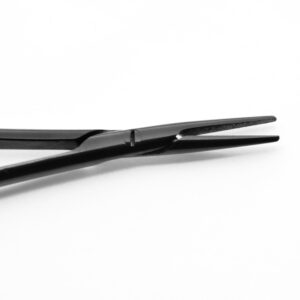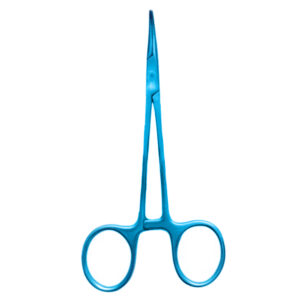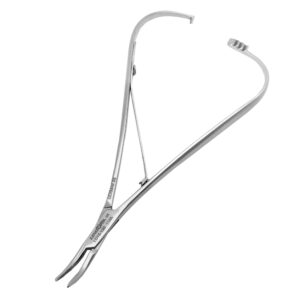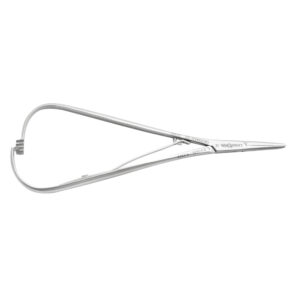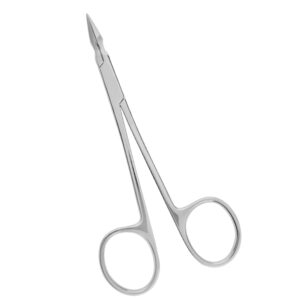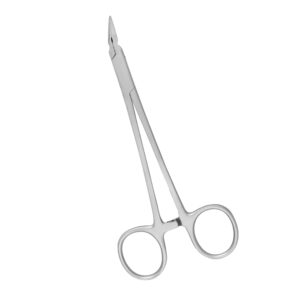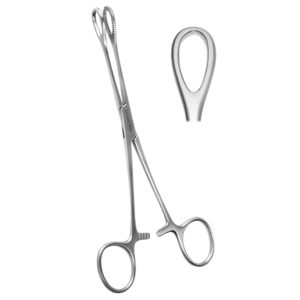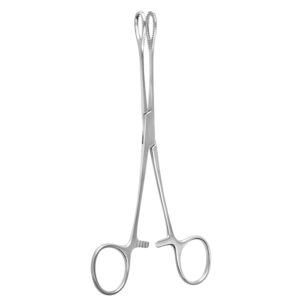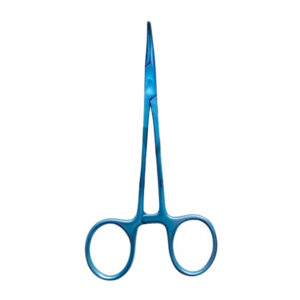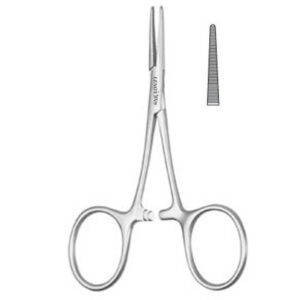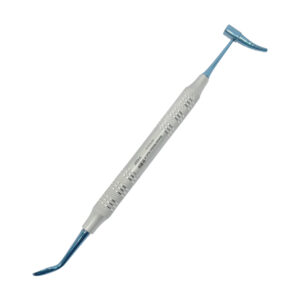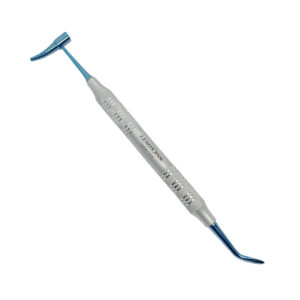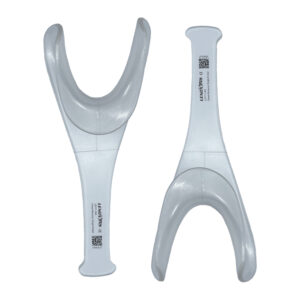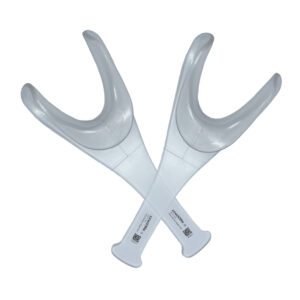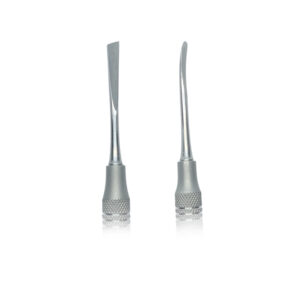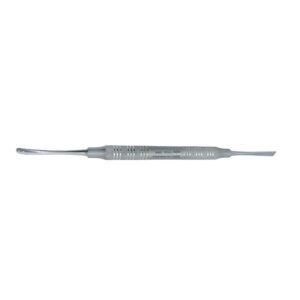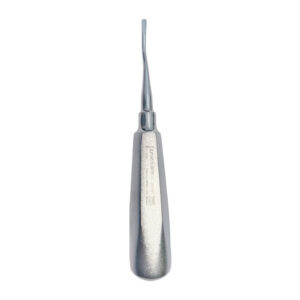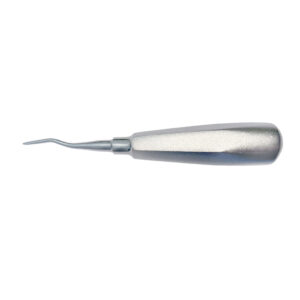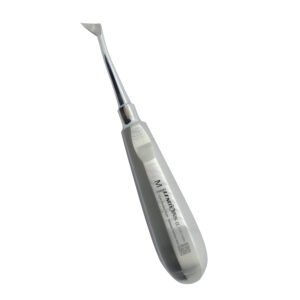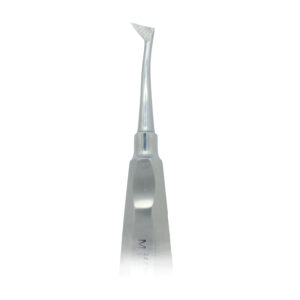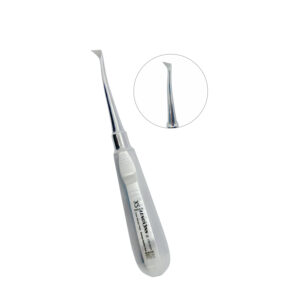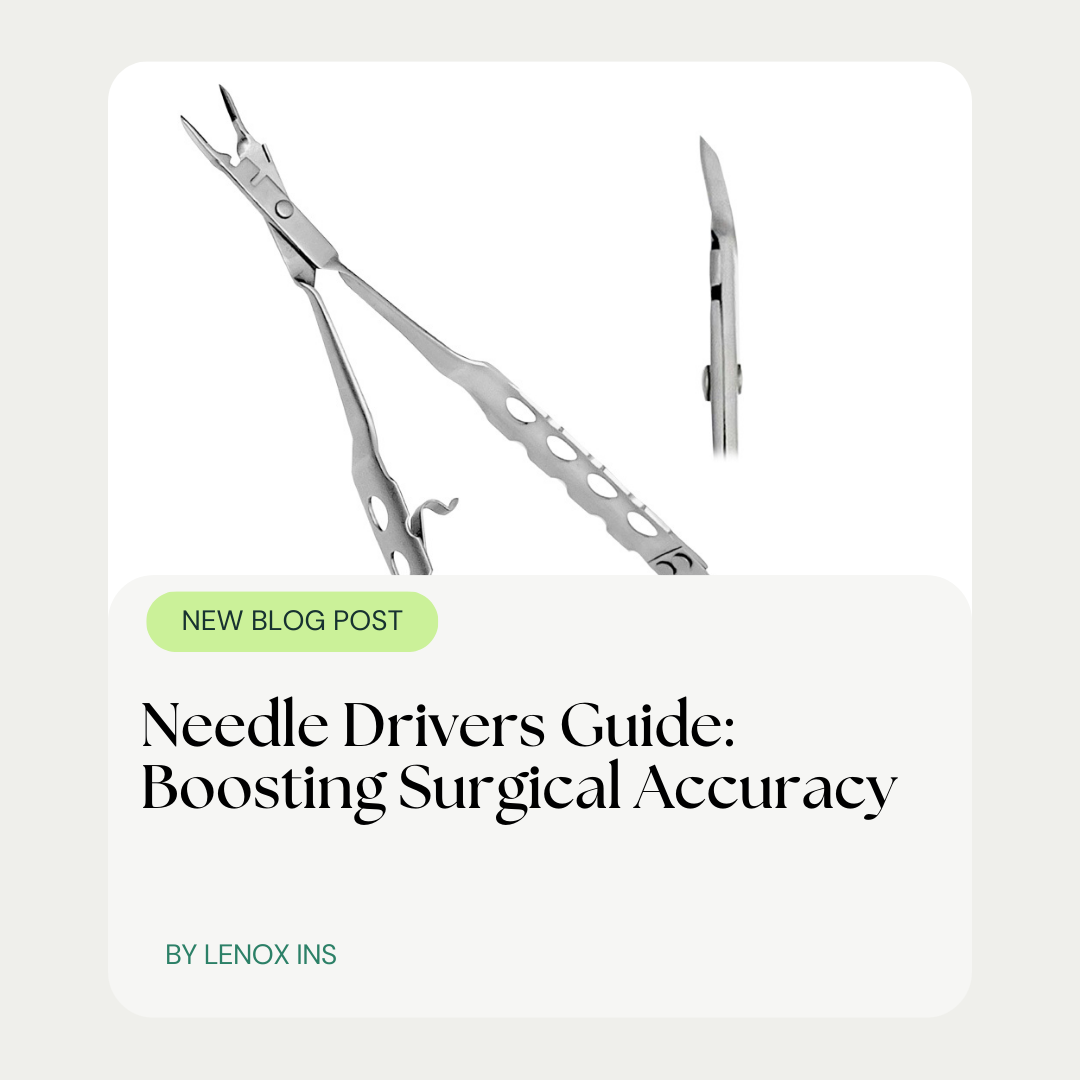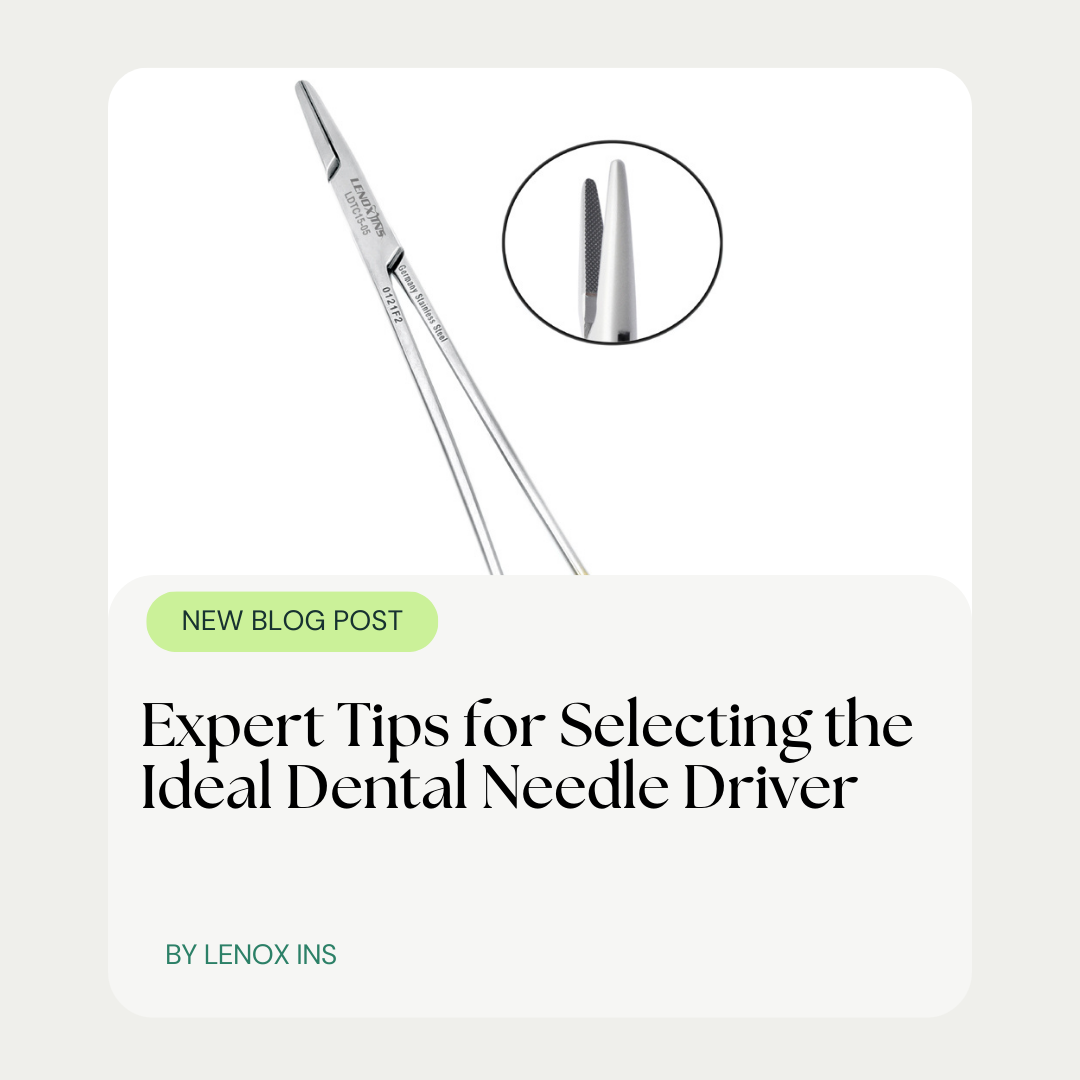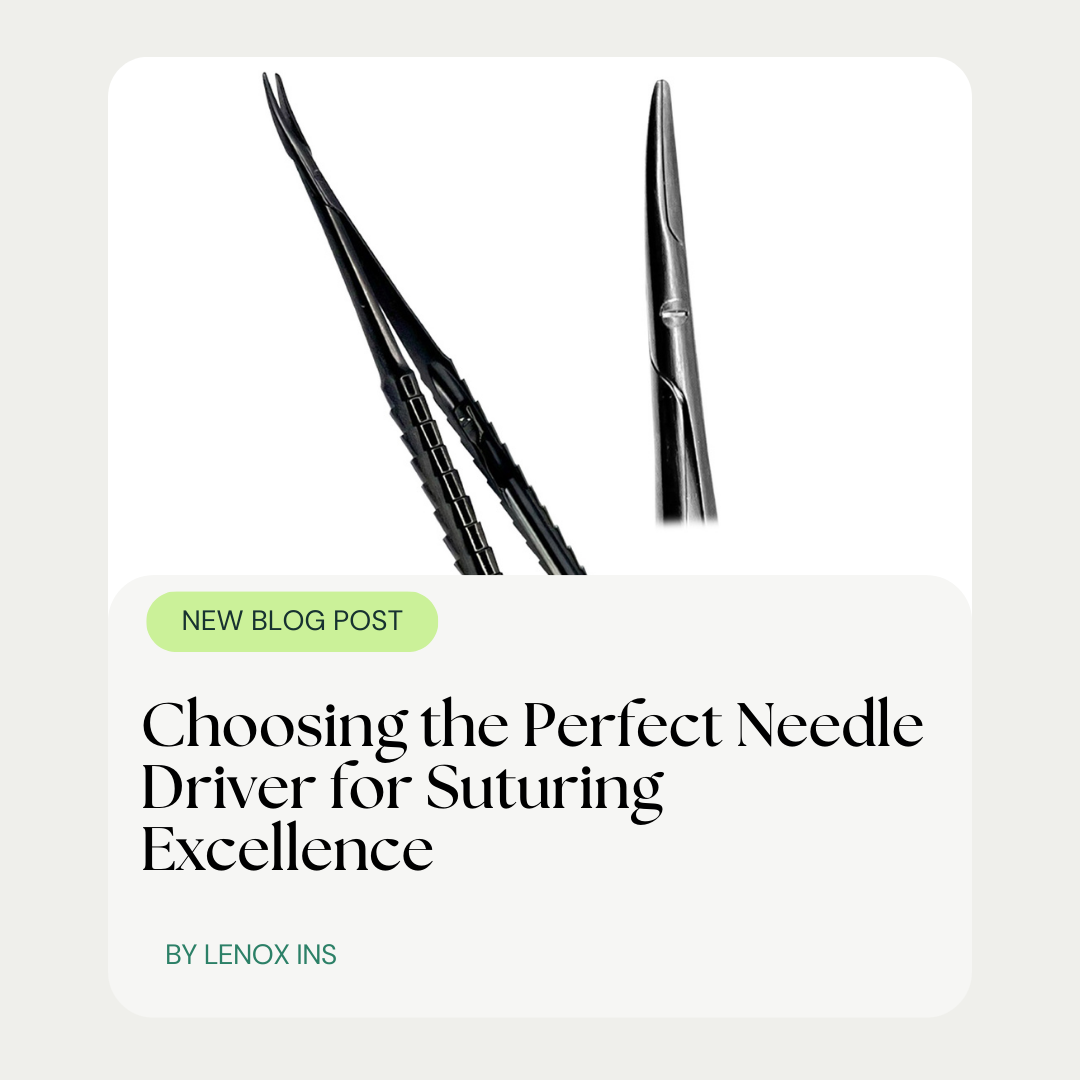Enhance Dental Surgeries: Crile Hemostat Benefits
- Posted November 29, 2024
- by lenoxinstro
Have you ever considered how precision tools like the Crile hemostat can significantly improve dental surgery outcomes? This specialized plier-like instrument plays a vital role in controlling bleeding through cauterization and pressure application, ensuring surgeries proceed with a clear view of the anatomy. This article will guide you through effective techniques for using Crile hemostats, detail how proper usage can elevate your surgical results, and emphasize the importance of maintaining these precision instruments. If you’re looking to enhance your dental surgical practice, understanding and utilizing Crile hemostats could be the key to more successful procedures and patient satisfaction. Crile hemostat
Understanding the Importance of Crile Hemostats in Dental Surgery
In the realm of dental surgery, precision and control are paramount for successful outcomes, and hemostatic instruments play a crucial role in achieving this. The Crile hemostat stands out with its unique features that make it indispensable for clinicians. Unlike other hemostatic tools, Crile hemostats offer enhanced grip and reliability, proving to be superior in managing surgical sites. By comparing Crile to its counterparts such as mosquito hemostats or a curette, one can see its distinct advantages in suturing and tissue handling. This discussion will delve into the significance of Crile hemostats within the dental surgical instrument kit, illustrating its superiority through a comparative lens and noting its impact on operational precision.
Overview of Hemostatic Instruments in Dentistry
Effective blood management is critical in dental surgery, and hemostatic tools serve as the surgeon’s ally in this domain. Among these tools, the Crile hemostat is renowned for its precise ligature control and secure grip, qualities that distinguish it from other instruments in both form and function. Its design incorporates a certain curvature that allows for better navigation in tight spaces, a feature valued by dental professionals aiming to compare efficacy and improve patient outcomes.
The Crile hemostat excels where meticulous tissue manipulation is necessary, outperforming other hemostatic instruments with its versatility and robust build. By offering a reliable mechanism to clamp blood vessels, dental surgeons can maintain a clear operating field. As a result, this tool not only facilitates optimal healing but also instills confidence in clinicians, who can focus on the intricate procedures required for dental health and restoration.
Unique Features of the Crile Hemostat
The Crile hemostat, with its locking mechanism forged from high-quality steel, ensures that dental professionals can accurately and securely clamp blood vessels, leading to better control during oral surgery procedures. The fine serrations on the jaws of the Crile forceps provide an excellent non-slip grip, distinguishing them from less-specialized instruments such as the rongeur, which is mainly used for removing overgrown or diseased bone and tissue.
Recognizing the demands of dental professionals, manufacturers of Crile hemostats prioritize customer service by offering well-crafted and durable tools that consistently perform under the pressures of dental surgeries. The original design of the Crile hemostat, reflecting both functionality and durability, caters specifically to the precision required in intricate dental procedures, cementing its place as an essential component of surgical success.
Comparing Crile Hemostats to Other Hemostatic Tools
In comparison to other hemostatic tools used in dental surgery, Crile hemostats offer a distinct advantage when handling delicate tissues and securing blood vessels. Unlike bone scissors which are designed for cutting through hard tissues, the Crile hemostat‘s fine serrations allow for gentle yet firm clamping, crucial for maintaining hemostasis during both dental and plastic surgery. As dental professionals prioritize patient safety and precision, incorporating this versatile tool into their practice is a strategic move to achieve better outcomes, encouraging them to add the Crile hemostat to their cart for their surgical toolkit.
When clinicians skip to content in their search for the ideal surgical instruments, the Crile hemostat consistently emerges as a preferred option. Its robust construction and functional design enable surgeons to operate with confidence, particularly in the intricacies of oral surgery where clear visualization and area access are non-negotiable. This hemostat‘s reliability not only streamlines the procedure but also minimizes tissue trauma, underscoring its role in optimizing surgical efficiency and improving patient recovery time.
Lenox Collection
-
Needle Holder, Fine Swedish Pattern, 15cm
Rated 0 out of 5CA$190Discover the Needle Holder, Fine Swedish Pattern, 15cm by Lenox Instruments, featuring tungsten carbide inserts for secure needle grip in delicate suturing procedures. -
Castro-Viejo Needle Holder Twist Joint, Curved 18cm TC – Precision Surgical Instrument
Rated 0 out of 5CA$190Discover the Castro-Viejo Needle Holder Twist Joint, Curved 18cm TC by Lenox Instruments. Designed for seamless suturing with advanced twist joint mechanism, tungsten carbide inserts, and ergonomic design. Trusted globally by surgical professionals. Shop now! -
Castro-Viejo Needle Holder Twist Joint, Curved 16cm TC – Precision Surgical Instrument
Rated 0 out of 5CA$190Discover the Castro-Viejo Needle Holder Twist Joint, Curved 16cm TC by Lenox Instruments. Designed for seamless suturing with advanced twist joint mechanism, tungsten carbide inserts, and ergonomic design. Trusted globally by surgical professionals. Shop now! -
Diethrich Micro Needle Holder 18cm STR – Precision Surgical Instrument
Rated 0 out of 5CA$190Discover the Diethrich Micro Needle Holder 18cm STR by Lenox Instruments. Designed for precise suturing with straight design, ergonomic handle, and superior durability. Trusted globally by surgical professionals. Shop now! -
Castroviejo Needle Holder 18cm CVD, Wide Handle Grip TC – Precision Surgical Instrument
Rated 0 out of 5CA$190Discover the Castroviejo Needle Holder 18cm CVD, Wide Handle Grip TC by Lenox Instruments. Designed for precise suturing with curved design, wide handle grip, and tungsten carbide inserts. Trusted globally by surgical professionals. Shop now! -
Castroviejo Needle Holder 18cm STR, Wide Handle Grip TC – Precision Surgical Instrument
Rated 0 out of 5CA$190Discover the Castroviejo Needle Holder 18cm STR, Wide Handle Grip TC by Lenox Instruments. Designed for precise suturing with straight design, wide handle grip, and tungsten carbide inserts. Trusted globally by surgical professionals. Shop now! -
Diethrich Micro Needle Holder 18cm CVD – Precision Surgical Instrument
Rated 0 out of 5CA$190Discover the Diethrich Micro Needle Holder 18cm CVD by Lenox Instruments. Designed for precise suturing with curved design, ergonomic handle, and superior durability. Trusted globally by surgical professionals. Shop now! -
Micro Needle Holder TC 18cm STR Locking – Precision Surgical Instrument
Rated 0 out of 5CA$190Discover the Micro Needle Holder TC 18cm STR Locking by Lenox Instruments. Designed for precise suturing with tungsten carbide inserts, locking mechanism, and ergonomic design. Trusted globally by surgical professionals. Shop now!
Proper Techniques for Using the Crile Hemostat
Mastering the Crile hemostat is a cornerstone of operative precision in dental surgery. Handling and grip methods tailored to this stainless steel device pave the way for meticulous tissue control using its locking jaw mechanism. Common procedures leverage the fine serrations on the Crile hemostat, working harmoniously with scalpels and needle holders to maintain an unobstructed field. Effective bleeding management steps utilizing tungsten carbide enhancements exemplify the hemostat’s functionality. This segment explores these facets, enhancing the surgeon’s technique for superior patient outcomes.
Handling and Grip Methods
Mastering the Crile clamp‘s grip is essential for dental surgeons aiming to minimize tissue damage during surgery. Skilled handling involves applying just the right amount of pressure to secure blood vessels without compromising their integrity. To achieve this, surgeons must become adept at adjusting the clamp‘s length and tension, ensuring a firm yet delicate grip that underpins surgical precision and patient comfort.
During dental procedures, the Crile hemostat functions effectively when its jaws are positioned correctly, paralleling the chisel‘s exact alignment required in shaping bone. This precise maneuver allows the surgeon to clamp target areas decisively, facilitating better control and thus optimizing surgery outcomes. The meticulous engagement of the Crile hemostat can turn a routine clamp application into a defining moment for successful tissue management.
Common Procedures Using Crile Hemostats
In the United States, dental professionals frequently use the Crile hemostatic clamp during extractions and periodontal surgeries for its dependable grip and control of blood flow. The satisfaction in performance is often backed by a warranty that reassures the customer of the instrument’s quality. Clinicians rely on this tool to secure the suture needle when tying knots, ensuring wound closure with precision and fostering an environment conducive to healing.
Moreover, the Crile hemostatic clamp is instrumental in procedures that require the manipulation of delicate gingival tissues. Its fine-tipped design allows for a nuanced approach, minimizing trauma and contributing to patient comfort during the intervention. Dental surgeons value the haptic feedback provided by the Crile clamp, which enhances their tactile sense and improves the overall efficacy of the surgical technique.
Steps for Controlling Bleeding Effectively
Effective bleeding control is a cornerstone of dental surgery, and the Crile hemostat, with its precise ratchet mechanism, offers unparalleled support in this regard. The surgeon can rely on the hemostat‘s ability to clamp down on tissue, ensuring that blood vessels are secured, and blood flow is managed without causing tissue trauma. Such control is vital, as a clear surgical field enhances the accuracy of incisions and suturing, directly impacting patient recovery times and the success of the surgical outcome.
Equipped with tungsten jaws, the Crile hemostat provides dental surgeons with the necessary resilience to maintain grip on tissue throughout the procedure. By employing this tool, clinicians can retract delicate tissues with confidence, knowing that the locking feature will hold the position steady, thereby facilitating surgical precision. This technique not only streamlines the operative workflow but also minimizes the risk of postoperative complications, affirming the Crile hemostat’s essential role in optimizing dental surgery outcomes.
Maximizing Surgical Outcomes With Crile Hemostats
Attaining optimal results in dental surgery hinges on managing blood loss, expediting recovery, and refining surgical techniques. The Crile hemostat, a pivotal crile forcep in this process, enables clinicians to minimize bleeding during intricate procedures. Mastering its use can significantly enhance patient recovery time and elevate the precision of surgical maneuvers. This section expounds on how effective application of the Crile hemostat leads to superior surgical performance, illustrating practical methods to curtail blood loss, hasten healing, and sharpen the precision of dental surgery techniques.
Reducing Bleeding During Dental Procedures
Minimizing blood loss during dental procedures is of utmost importance to ensure clear visibility and patient stability. The Crile hemostat, with its precision grip, plays a vital role in controlling bleeding by clamping down on blood vessels swiftly and effectively. Its design allows dental surgeons to achieve a secure hold, thereby reducing the risk of hemorrhage and contributing to a more manageable and successful surgical experience.
Dental professionals rely on the Crile hemostat to maintain a dry operative field, which is essential for precise tissue manipulation and suture placement. This instrument’s fine serrations and locking mechanism support delicate clamping actions that stem bleeding without inflicting additional trauma to the tissue. By utilizing the Crile hemostat adeptly, surgeons can address bleeding efficiently, enhancing patient outcomes and facilitating a smoother, quicker recovery process.
Enhancing Patient Recovery Time
Swift recovery post-dental surgery is crucial for patient satisfaction and long-term oral health. Utilizing the Crile hemostat allows for precise control over blood vessels, significantly limiting blood loss and reducing the overall inflammation that can delay healing. This strategic approach to managing the surgical site ensures patients benefit from reduced discomfort and quicker return to daily routines.
Additionally, the Crile hemostat‘s ability to maintain a clear operative field reduces the risk of infection—a common complication that can extend recovery times. By preventing excessive blood flow during dental procedures, this tool not only heightens surgical accuracy but also promotes faster tissue regeneration, leading to improved recovery rates and better patient prognoses.
Improving Precision in Surgical Techniques
The Crile hemostat’s precision engineering allows dental surgeons to execute surgical techniques with greater accuracy, directly impacting the quality of patient care. With its reliable clamping action, dental professionals can meticulously handle tiny blood vessels and delicate tissues, ensuring that each suture is placed with utmost precision and care. The assurance of a secure grip minimizes movement and slippage, an advantage that directly translates to enhanced surgical outcomes.
In practice, the delicate balance achieved through the Crile hemostat‘s use grants surgeons the ability to perform under stringent demands, where every millimeter is crucial. It streamlines complex dental surgeries by providing stability in tissue manipulation, which is essential in procedures that require high fidelity. Thus, by optimizing the nuances of surgical technique, the Crile hemostat contributes to better procedural accuracy, reduced risk of complications, and improved healing trajectories.
Training and Skill Development With Crile Hemostats
Developing expertise with the Crile hemostat is essential for dental surgeons seeking to enhance their surgical outcomes. New dental surgeons can build foundational skills, while experienced practitioners can master advanced techniques, ensuring ongoing professional growth. Resources dedicated to continuous education in these areas support the refinement of practical skills. Each of these aspects contributes to achieving precision in dental procedures, ultimately optimizing patient care.
Essential Skills for New Dental Surgeons
For burgeoning dental surgeons, building proficiency with the Crile hemostat is fundamental to carrying out surgeries with enhanced precision and assurance. An essential skill set includes the adept manipulation of this instrument to secure delicate blood vessels and promote hemostasis. This hands-on competence underpins the execution of dental procedures with minimal tissue trauma, fostering rapid patient recovery and contributing to a surgeon’s growing proficiency.
New dental practitioners must focus on achieving a harmonious balance between firm grip and gentle care when operating with the Crile hemostat. Mastery of this tool‘s use is pivotal in navigating the complexities of oral surgery, ensuring that every movement contributes positively to surgical outcomes. As their confidence grows, these surgeons will find their operational dexterity with the Crile hemostat indispensible in delivering high-quality patient care.
Lenox Collection
-
Needle Holder, Fine Swedish Pattern, 15cm
Rated 0 out of 5CA$190Discover the Needle Holder, Fine Swedish Pattern, 15cm by Lenox Instruments, featuring tungsten carbide inserts for secure needle grip in delicate suturing procedures. -
Castro-Viejo Needle Holder Twist Joint, Curved 18cm TC – Precision Surgical Instrument
Rated 0 out of 5CA$190Discover the Castro-Viejo Needle Holder Twist Joint, Curved 18cm TC by Lenox Instruments. Designed for seamless suturing with advanced twist joint mechanism, tungsten carbide inserts, and ergonomic design. Trusted globally by surgical professionals. Shop now! -
Castro-Viejo Needle Holder Twist Joint, Curved 16cm TC – Precision Surgical Instrument
Rated 0 out of 5CA$190Discover the Castro-Viejo Needle Holder Twist Joint, Curved 16cm TC by Lenox Instruments. Designed for seamless suturing with advanced twist joint mechanism, tungsten carbide inserts, and ergonomic design. Trusted globally by surgical professionals. Shop now! -
Diethrich Micro Needle Holder 18cm STR – Precision Surgical Instrument
Rated 0 out of 5CA$190Discover the Diethrich Micro Needle Holder 18cm STR by Lenox Instruments. Designed for precise suturing with straight design, ergonomic handle, and superior durability. Trusted globally by surgical professionals. Shop now! -
Castroviejo Needle Holder 18cm CVD, Wide Handle Grip TC – Precision Surgical Instrument
Rated 0 out of 5CA$190Discover the Castroviejo Needle Holder 18cm CVD, Wide Handle Grip TC by Lenox Instruments. Designed for precise suturing with curved design, wide handle grip, and tungsten carbide inserts. Trusted globally by surgical professionals. Shop now! -
Castroviejo Needle Holder 18cm STR, Wide Handle Grip TC – Precision Surgical Instrument
Rated 0 out of 5CA$190Discover the Castroviejo Needle Holder 18cm STR, Wide Handle Grip TC by Lenox Instruments. Designed for precise suturing with straight design, wide handle grip, and tungsten carbide inserts. Trusted globally by surgical professionals. Shop now! -
Diethrich Micro Needle Holder 18cm CVD – Precision Surgical Instrument
Rated 0 out of 5CA$190Discover the Diethrich Micro Needle Holder 18cm CVD by Lenox Instruments. Designed for precise suturing with curved design, ergonomic handle, and superior durability. Trusted globally by surgical professionals. Shop now! -
Micro Needle Holder TC 18cm STR Locking – Precision Surgical Instrument
Rated 0 out of 5CA$190Discover the Micro Needle Holder TC 18cm STR Locking by Lenox Instruments. Designed for precise suturing with tungsten carbide inserts, locking mechanism, and ergonomic design. Trusted globally by surgical professionals. Shop now!
Advanced Techniques for Experienced Practitioners
Experienced dental surgeons elevate their practice by employing advanced techniques with the Crile hemostat, using nuanced movements to handle even the most challenging tissue structures. They integrate sophisticated clamping strategies to isolate and secure microscopic vessels efficiently, minimizing intraoperative bleeding and facilitating precision in every dental intervention. This expertise ensures they maintain an unobstructed view, crucial for the detailed work prevalent in oral surgeries, thus optimizing patient outcomes.
The adept use of the Crile hemostat by veteran practitioners demonstrates their commitment to meticulous surgical care. By refining their grasp and release methodology, these surgeons optimize tissue management, ensuring a balance of tension that prevents tissue damage while providing adequate exposure. Such skill not only enhances the surgical process but also aids in the swift recovery of patients, a testament to the surgeon’s proficiency and the effectiveness of the Crile hemostat in complex dental procedures.
Resources for Ongoing Education
Dental professionals seeking to hone their skills with the Crile hemostat can tap into a variety of ongoing education resources. Workshops, webinars, and continuing education (CE) courses remain at the forefront, offering both foundational training and insights into advanced applications of this critical instrument. These educational pathways not only reinforce surgical expertise but also keep practitioners abreast of the latest techniques for hemostasis and tissue management.
Moreover, access to peer-reviewed journals and case study repositories provides a deep dive into the practical nuances of using the Crile hemostat in dental surgery. These platforms encourage clinicians to study real-world scenarios where hemostat proficiency has directly impacted surgical outcomes, fostering an environment of continuous learning and improvement within the dental community.
Maintenance and Care of Crile Hemostats
Maintaining Crile hemostats is essential for their longevity, the safety of patients, and the effectiveness of dental surgeries. Proper cleaning procedures help preserve the integrity and functionality of these instruments. Sterilization protocols are critical for eliminating risks of infection, ensuring each use is as safe as the first. Additionally, recognizing when a hemostat needs replacement is vital for maintaining the high standards required in surgical environments. The following sections will offer practical advice on these maintenance topics to optimize dental surgery outcomes.
Cleaning Procedures for Longevity
Maintaining the integrity of Crile hemostats hinges on adherence to thorough cleaning procedures, ensuring that these essential tools remain both functional and reliable over extended use. Dentists and surgical technicians should engage in regular decontamination practices, carefully removing biological debris before sterilization to prolong the hemostat‘s lifespan. Proper cleansing with compatible solutions followed by meticulous inspection for any signs of wear plays a pivotal role in preserving the precision of this instrument, which is vital for the success of dental surgeries.
Dental practitioners recognize the necessity of implementing strict sterilization protocols that mirror the hemostat‘s material resilience. After each procedure, it is imperative to autoclave the Crile hemostats at the recommended temperatures, not only to maintain a sterile environment but also to prevent corrosion and dulling of the jaws. Such attentiveness to the cleaning regimen extends the functional life cycle of Crile hemostats and sustains their contribution to precise tissue manipulation and optimal surgical outcomes.
Sterilization Protocols for Patient Safety
Adhering to stringent sterilization protocols is essential for safeguarding patient safety during dental surgery, with the Crile hemostat being no exception. Dental professionals ensure the sterility of these instruments by employing autoclaving procedures that eradicate all microbial life. This process not only prevents cross-contamination between patients but also preserves the functional integrity of the hemostat, crucial for maintaining a sterile surgical environment.
The careful application of sterilization guidelines reflects a commitment to patient health and operational efficacy. Dental practitioners understand that consistent sterilization of Crile hemostats mitigates the risk of infection, fostering trust and promoting positive surgical outcomes. By meticulously executing these protocols, clinicians deliver on their promise of superior care, reinforcing the instrument’s role in the success of dental procedures.
Identifying When Replacement Is Needed
Regular inspection of Crile hemostats ensures their optimal performance in dental surgeries. Signs of wear, such as blunted tips, misaligned jaws, or compromised locking mechanisms, indicate the need for replacement. Dental professionals recognize that using instruments in top condition is crucial for maintaining surgical precision and outcome quality.
Dental surgeons must also be vigilant for signs of corrosion or metal fatigue, which can impact the hemostat‘s efficacy and patient safety. When Crile hemostats no longer pass rigorous quality checks or display consistent sterilization resistance, procuring new ones becomes necessary to uphold the high standards of dental surgical care.
Case Studies Highlighting Successful Use of Crile Hemostats
Exploring real-life examples provides invaluable insights into the effectiveness of Crile hemostats in dental surgery. This section presents clinical practices where the use of Crile hemostats has significantly improved surgical outcomes. It delves into practical lessons learned and the experiential knowledge shared by seasoned dental surgeons. Each case study underscores the hemostat‘s role in enhancing patient recovery, showcasing its importance in complex dental procedures and emphasizing the benefits of its application from a professional standpoint.
Real-Life Examples of Improved Surgical Outcomes
In a study focusing on periodontal procedures, the employment of Crile hemostats was associated with markedly reduced intraoperative bleeding, which allowed dental surgeons to perform with heightened precision and efficiency. This finding underscored the instrument’s critical role in maintaining a clear surgical view, thus streamlining the operational workflow and significantly improving patient recovery timelines.
Another report highlighted a complex maxillofacial surgery where Crile hemostats were pivotal in achieving meticulous hemostasis. The surgeons credited the hemostats for their unparalleled grip and control, which resulted in minimal blood loss and post-operative swelling, enhancing patient comfort and satisfaction with the surgical outcome. These examples substantiate the Crile hemostat’s value as an indispensable tool for optimizing dental surgery results.
Lenox Collection
-
Needle Holder, Fine Swedish Pattern, 15cm
Rated 0 out of 5CA$190Discover the Needle Holder, Fine Swedish Pattern, 15cm by Lenox Instruments, featuring tungsten carbide inserts for secure needle grip in delicate suturing procedures. -
Castro-Viejo Needle Holder Twist Joint, Curved 18cm TC – Precision Surgical Instrument
Rated 0 out of 5CA$190Discover the Castro-Viejo Needle Holder Twist Joint, Curved 18cm TC by Lenox Instruments. Designed for seamless suturing with advanced twist joint mechanism, tungsten carbide inserts, and ergonomic design. Trusted globally by surgical professionals. Shop now! -
Castro-Viejo Needle Holder Twist Joint, Curved 16cm TC – Precision Surgical Instrument
Rated 0 out of 5CA$190Discover the Castro-Viejo Needle Holder Twist Joint, Curved 16cm TC by Lenox Instruments. Designed for seamless suturing with advanced twist joint mechanism, tungsten carbide inserts, and ergonomic design. Trusted globally by surgical professionals. Shop now! -
Diethrich Micro Needle Holder 18cm STR – Precision Surgical Instrument
Rated 0 out of 5CA$190Discover the Diethrich Micro Needle Holder 18cm STR by Lenox Instruments. Designed for precise suturing with straight design, ergonomic handle, and superior durability. Trusted globally by surgical professionals. Shop now! -
Castroviejo Needle Holder 18cm CVD, Wide Handle Grip TC – Precision Surgical Instrument
Rated 0 out of 5CA$190Discover the Castroviejo Needle Holder 18cm CVD, Wide Handle Grip TC by Lenox Instruments. Designed for precise suturing with curved design, wide handle grip, and tungsten carbide inserts. Trusted globally by surgical professionals. Shop now! -
Castroviejo Needle Holder 18cm STR, Wide Handle Grip TC – Precision Surgical Instrument
Rated 0 out of 5CA$190Discover the Castroviejo Needle Holder 18cm STR, Wide Handle Grip TC by Lenox Instruments. Designed for precise suturing with straight design, wide handle grip, and tungsten carbide inserts. Trusted globally by surgical professionals. Shop now! -
Diethrich Micro Needle Holder 18cm CVD – Precision Surgical Instrument
Rated 0 out of 5CA$190Discover the Diethrich Micro Needle Holder 18cm CVD by Lenox Instruments. Designed for precise suturing with curved design, ergonomic handle, and superior durability. Trusted globally by surgical professionals. Shop now! -
Micro Needle Holder TC 18cm STR Locking – Precision Surgical Instrument
Rated 0 out of 5CA$190Discover the Micro Needle Holder TC 18cm STR Locking by Lenox Instruments. Designed for precise suturing with tungsten carbide inserts, locking mechanism, and ergonomic design. Trusted globally by surgical professionals. Shop now!
Lessons Learned From Clinical Practice
In clinical practice, dental surgeons have learned the significance of employing the Crile hemostat‘s precision to reduce intraoperative complications. Insights gleaned from a multitude of procedures underscore that a steady hand combined with the reliable grip of Crile hemostats can minimize tissue trauma, leading to faster patient recovery and fewer postoperative issues. These lessons not only speak to the instrumental role of Crile hemostats in surgical accuracy but also to their contributions to reducing patient discomfort and ensuring a smoother healing process.
Case analysis from seasoned practitioners reveals that mastery of the Crile hemostat is linked to enhanced surgical outcomes. Surgeons point out that the confidence gained in handling these hemostats translates to more effective and swift surgical maneuvers. Acknowledging how Crile hemostats facilitate control over complex tissue interactions allows dental professionals to improve their technique continuously, further optimizing patient care and upholding the standard for dental surgical excellence.
Insights From Experienced Dental Surgeons
Experienced dental surgeons share that the Crile hemostat‘s reliable precision markedly reduces complications during dental surgeries. They emphasize that the deliberate application and controlled release provided by the Crile hemostat can prevent unnecessary tissue damage, thereby facilitating quicker healing and enhancing patient satisfaction.
Success stories from veteran dental professionals frequently highlight the exceptional control the Crile hemostat affords during complex surgical procedures. Such control is paramount when performing detailed work on blood vessels and soft tissues, with surgeons crediting the Crile hemostat for contributing to successful patient outcomes and streamlined surgical workflows.
Conclusion
The Crile hemostat emerges as an essential tool in dental surgery, providing unparalleled control and precision for minimizing bleeding and enhancing visibility during intricate procedures. Its design facilitates a secure grip on tissue and blood vessels, thereby optimizing surgical outcomes and fostering faster patient recovery. Dental professionals must maintain proficiency with this instrument to improve the accuracy of their techniques and ensure high-quality patient care. Ultimately, the Crile hemostat is instrumental in refining dental surgical practices, exemplifying its critical role in successful patient outcomes.




